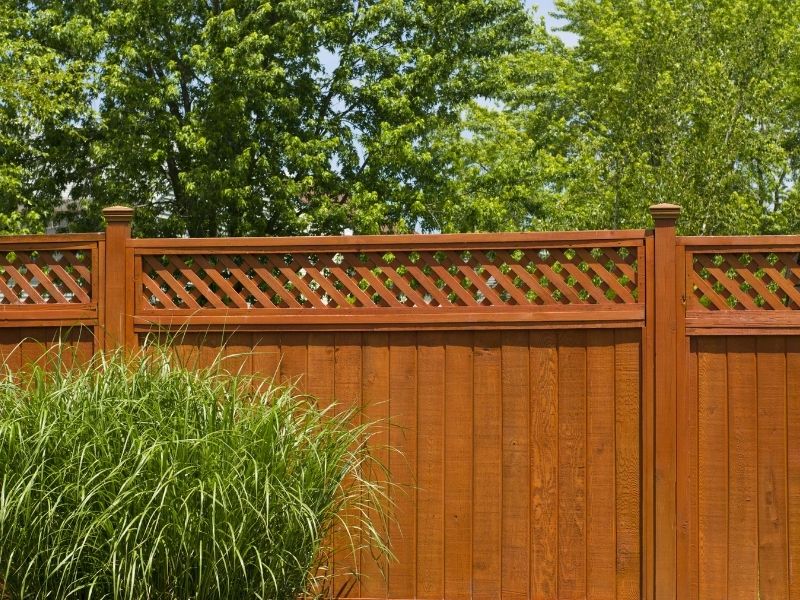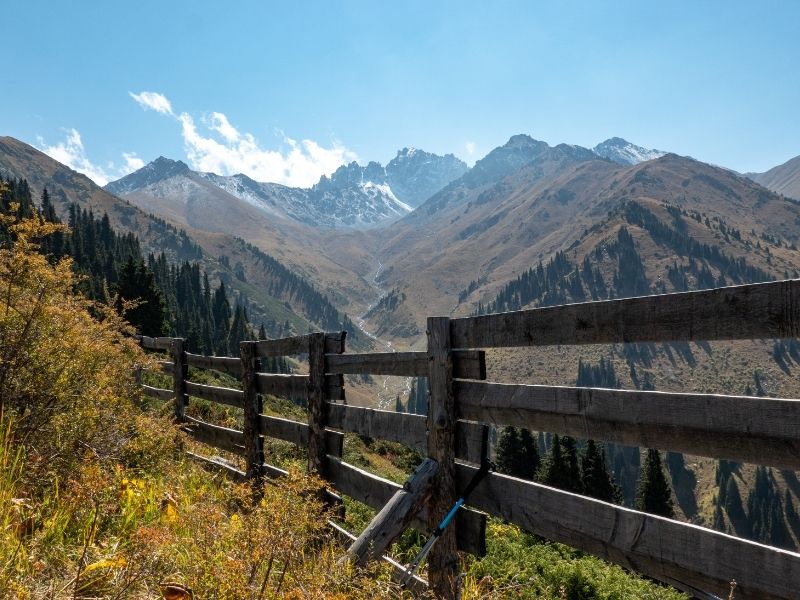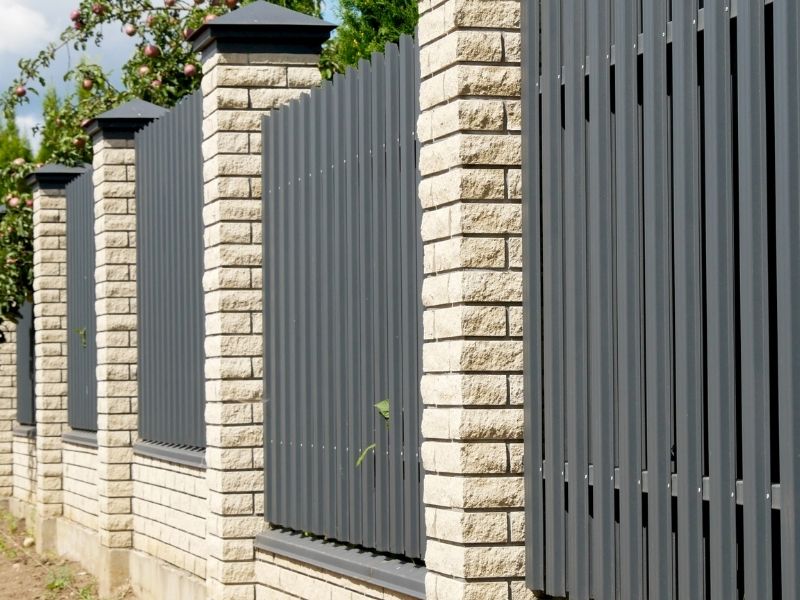Garden fencing provides your home so many benefits. Besides demarcating your property’s boundaries, a sturdy fence can provide security (for your family and pets), privacy, and add to the design aesthetic of your home. As such, deciding on the best material for your fencing is an important decision. Decide what factors are the most important to you and choose a material from there. To help you make this decision, we’ll look at the most popular fencing materials and discuss all their pros and cons.
Types of Garden Fencing
Wooden Fences
Wood is a great material for fencing as it’s sustainable, durable, and cost-effective. Sustainable wood fencing offers a wonderfully natural look. It can even be painted or stained to change its appearance. This in turn will match your garden. There is also a wide range of designs and styles to build or buy.
Wooden Fence Panels
Wood fence panels are simple to install and maintain. Each panel is pre-cut to size and slots into position. Carpentry brands often have a wide range of fence panel styles. These include painted, stained, and coated panels to speed up the process.

Wooden Pole Fencing
Wooden poles are also a popular choice for their simple installation and sturdiness. Poles can also be dug into the ground and placed in foundations. This provides a good buffer against the wind and can withstand whatever nature has to throw at it. Poles can be very cost-effective, protecting your home and adding privacy.
Wooden fences, while durable, do need annual maintenance. Without the proper coatings, wooden fencing can fall victim to poor weather conditions or insects. Wood also weathers over time. So while it can be negative, it can also create a unique aged appearance.
Sold on the style and durability of wood? You should try to source sustainable, reliable materials that are as uniform as possible. This will make fitting your fence easier whilst reducing your carbon footprint.

Metal Fencing
If you’d rather go with metal fencing there are plenty of styles and materials to choose from. From aluminium to steel, palisade to chainlink. Metal fencing is popular as an added security barrier to your home. It can also be painted and is incredibly robust.
Aluminium Fencing
Aluminium fencing is lightweight and does not corrode. This makes it great for extreme temperatures and inclement weather. Aluminium has been used primarily in commercial settings but also as barriers around swimming pools. Aluminium is also recyclable making it more eco-friendly.
As it is so lightweight, aluminium can be dented or bent leading to extensive repairs. It is also not traditionally a house fencing material so will require clever styling to fit the home aesthetic.

Steel fencing
Steel fencing is a high-quality material that can be used for hundreds of years once installed. Much like wrought iron fences, steel can be shaped to create unique designs and accents. Steel can also be painted for added protection against corrosion. As well as to match your colour palette.
With such a low level of maintenance, high durability, and many styling options, the only downside to steel is the initial cost. It can be expensive at the front end, but once installed will last a lifetime.

At JTD Building Supplies we offer tried and trusted products that have been proven to work time and time again. If you need a hand choosing the right product or want to know more about fencing options, contact us. One of our team members will help you source the perfect materials.
